Life at HKU SPACE Our Stories
HKU SPACE Community College builds a science and technology resource sharing network for secondary schools Feature Story
- Date
- 09 Apr 2021 (Fri)
Teaching technology is changing rapidly, and CAVE (Cave Automatic Virtual Environment) which has emerged in recent years is one of the best. HKU SPACE Community College (the College), which has always been actively connecting with the community, has already applied this technology to different disciplines such as architecture, interior design and marketing as early as 2018, and used its own technical advantages to launch the “CAVE” programme in April 2019, building VR CAVE hubs for all districts to help secondary schools in Hong Kong establish a technology resource sharing network in the community and encouraging diversified teaching to secondary schools.
This programme was funded by the Quality Education Fund and has so far set up CAVE systems for 6 secondary schools, including True Light Middle School of Hong Kong, Po On Commercial Association Wong Siu Ching Secondary School, Po Leung Kuk Mrs Ma Kam Ming-Cheung Fook Sien College, Po Leung Kuk Laws Foundation College, Fanling Kau Yan College and Ju Ching Chu Secondary School (Yuen Long);
and the College has produced 4 VR teaching materials for teachers and students to enjoy an immersive experience. Professor Chan Lung-sang, College Principal who leads this programme, pointed out that the 6 secondary schools are located in different regions. In addition to allowing their own students to use the system’s facilities, the participating secondary schools also promised to open the system to other schools’ students and even neighborhoods in their districts during certain periods of time, increasing the number of people who can benefit from the programme through resource sharing.
Professor Chan continued to explain, “In the immersive CAVE system, teachers are more involved and can play a leading and supporting role which is very suitable for the learning model of secondary school students. The 4 provided VR teaching materials are mainly in geography and geology, and although they can’t completely replace field trips, students would first understand the environment of the sites through VR CAVE, which can definitely improve the effectiveness of their field studies.” The system can be applied to different disciplines and in the future, teachers can add school-based elements when designing textbooks to increase students’ affiliation and significantly improve their learning motivation.
Teachers and students walk into the virtual world of CAVE
Ms Yau Kit-ying Veronica, principal of Fanling Kau Yan College, deeply felt that the best concept regarding the goal of implementing the CAVE programme is sharing community resource. “Let’s take our school as an example - there is a special school on the opposite side from ours. It’s quite difficult for them to organise their students for field trips far away, however, the CAVE in our school is only across the street from them so it’s convenient and safe for them to conduct field studies here.” Principal Yau wished to provide further benefits to students in the future by including different career knowledge into the system, allowing students to preliminarily understand and grasp the nature of relevant work, which would help them in selecting subjects when entering higher school in the future.
Ms Hui Tuen-yung, principal of True Light Middle School of Hong Kong, said that in addition to the teachers of geography and STEM subjects, the heads of other subjects have also learned about the operation of the CAVE system in person and are now thinking about how to apply them to their teaching. “In the future, teachers will design school-based teaching materials so it’s expected that learning and teaching will be more interesting and more informative. We have also introduced VR CAVE to directors and teachers of the primary school and kindergarten, helping them learn about this new teaching technology as soon as possible.”
Given that geography field trips are heavily affected by weather and manpower, there are a lot of limitations. Mr Chung Fat-shing, principal of Po On Commercial Association Wong Siu Ching Secondary School, said, “The establishment of VR CAVE has not only gotten rid of these two problems, but also enhanced the enjoyment of students’ learning. This programme starts with geography but it can be applied to other subjects, such as biology, information and communication technology (ICT) and even visual arts. VR CAVE is ready and can be officially put into practice when schools reopen.”
The principals have looked at the advantages of VR CAVE from a macro perspective, so how about teachers who actually operate the system? Mr Keung, a geography teacher at Po Leung Kuk Mrs Ma Kam Ming-Cheung Fook Sien College, said, “Currently, we have suitable content for all geography subjects from grade S1 to S5. We played segmented VR scenes in the class and guided students to do some interactive actions. All the students showed their excitement and some even proposed to take geography as their elective.” He admitted that the programme is currently in the initial stage and still needs a lot of fine adjustments; in addition, there are not many geography classes every week, which has limited the application of VR CAVE, therefore after-school group learning is under consideration.
Professor Chan Lung-sang added that Po Leung Kuk Mrs Ma Kam Ming-Cheung Fook Sien College is located in Tung Chung, the most western part of Hong Kong; when visiting the High Island Reservoir East Dam to study the geology and landscape of Hong Kong, the school’s students need to take 2 hours for a one-way trip; however, VR CAVE can ‘bring’ the East Dam on-site, saving the teachers and students a lot of time.
Mr Ip, an ICT teacher at Po Leung Kuk Laws Foundation College, said that although their school is located in the east of Hong Kong which is very convenient for them to visit the East Dam, Covid-19 has made field trips very difficult, therefore VR CAVE has come at the right time. “We invited our 6th grade students to try it out, helping them understand that VR is not limited to e-sports games, but can also be used for classroom learning. VR CAVE allows multiple people to participate in the same scene so it’s easier for teachers to explain and guide, and it can strengthen the interactions between teachers and students.”
Mr Wong Chi-wai, a geography teacher of Ju Ching Chu Secondary School, praised VR CAVE as a high-quality learning place: “Teachers and students can enter the same scene in 1:1 scale to communicate and exchange opinions, and learn interactively in a safe and highly realistic immersive virtual environment. Students in geography can virtually visit natural attractions that they rarely have the opportunity to go to, and with low costs. We wish to expand the application of this system to other science subjects in the future.”
The purpose of establishing VR CAVE in secondary schools is to benefit learning and teaching, and all the students have affirmed its value after usage. Among them, Li Chiu-kit, a 6th grade student from Kau Yan College, thought that previewing features of the surrounding environment through the VR system could help them to conduct more in-depth exploration during the actual field studies, and help them to respond to the fieldwork-based questions in the HKDSE. Student Chung Shu-yuet said that the photos and videos of relevant landforms were added to the VR system, and the virtual fieldwork guide of Lai Chi Chong, given by Professor Chan Lung-sang, was also added - it was as if the students were conducting field trips in different places.
Brainstorm and share results
During the process when the 6 secondary schools were sharing their experiences, principals and teachers all put forward some thoughts. Mr Keung suggested that schools should spend more time arranging and adjusting classes in the next school year to reduce the chance of leaving the CAVE system unoccupied and avoid time conflicts among classes, making full use of this resource.
Moreover, in the next step of the development plan of VR CAVE, teachers will design and develop school-based teaching materials, however, Principal Chung expressed certain concerns: “This work has high requirements in computer hardware and equipment but the schools’ existing equipment may not meet requirements, so new products need to be purchased. The schools can still cope with the situation at present but if there are more and higher requirements on equipment in the future, it may put pressure on the schools’ finances.”
Having said that, Professor Chan believed that VR CAVE’s teaching materials and teachers’ instructions are more important than its equipment. And he hoped that the 6 secondary schools can share their own teaching content with each other in the future. In this way, all of the textbooks would gain 6 times the benefit. When the resource sharing network is expanded to the community, the number of benefited schools, teachers and students will exceed far beyond expectations.



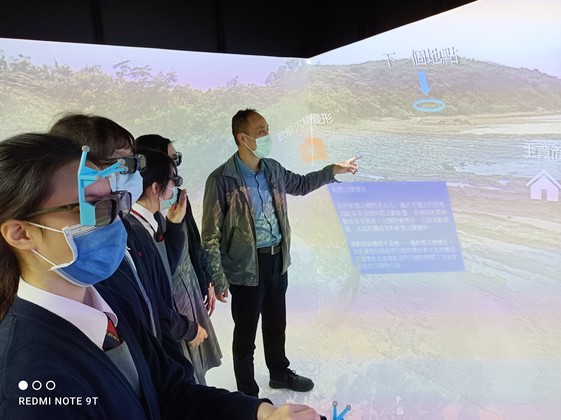


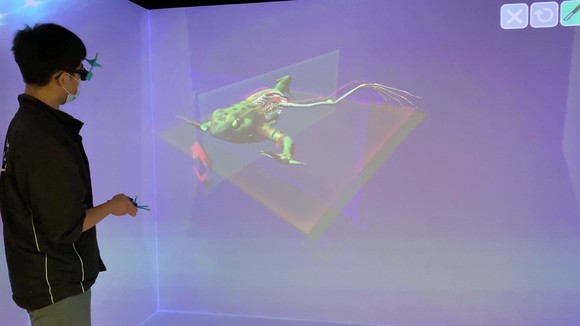


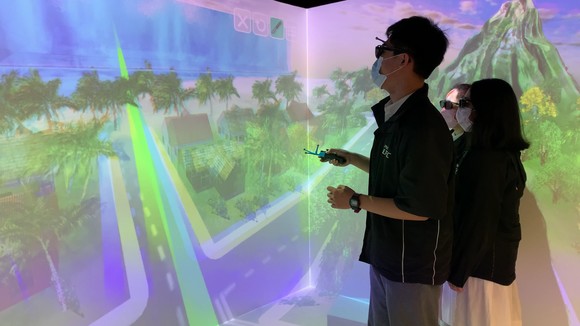




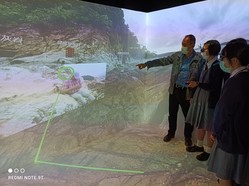




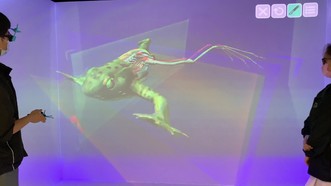




_990x370.png)